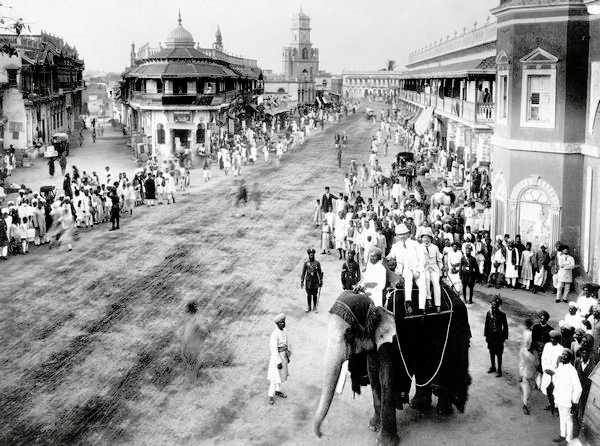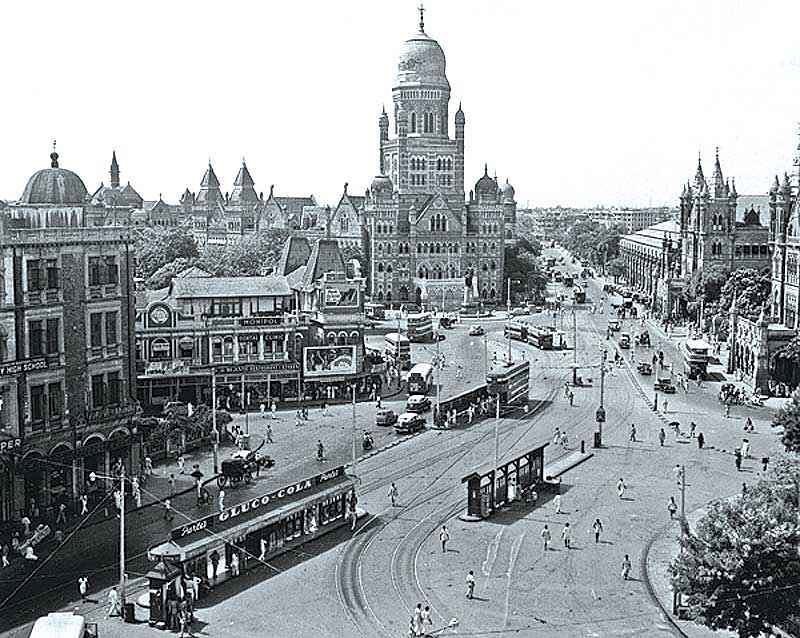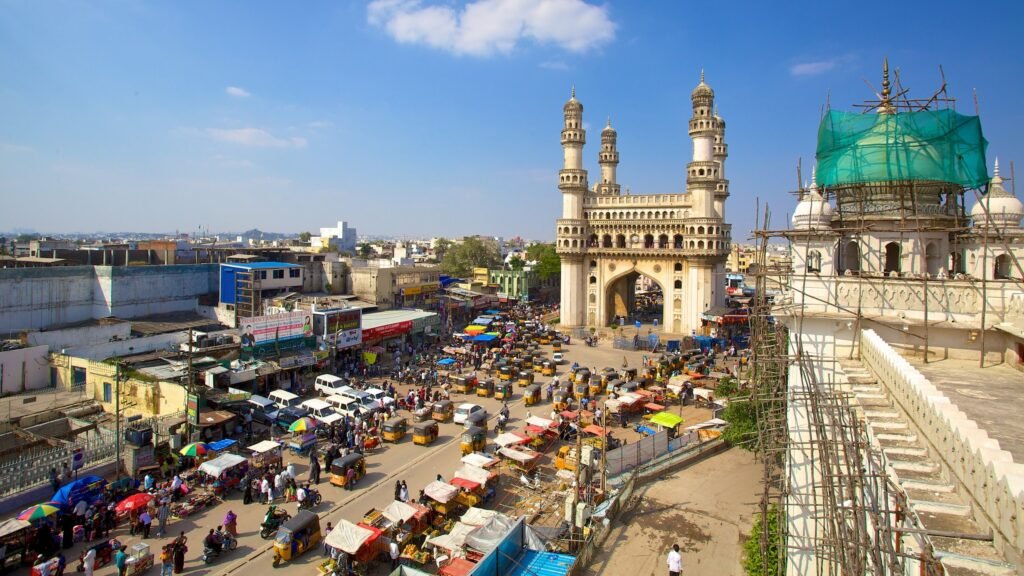Hyderabad Then and Now
Hyderabad Then
Hyderabad, the capital city of Telangana in south-central India, has a rich history reflected in its name and cultural evolution.
The name “Hyderabad” is believed to mean “Haydar’s City” or “Lion City,” derived from the Arabic words Haydar (lion) and ābād (city), referencing the bravery of Caliph Ali Ibn Abi Talib, also known as Haydar.
The city was originally called Baghnagar, meaning “city of gardens,” a name that emphasized its lush and green landscape.
In the 17th century, European travelers like von Poser and Thévenot noted both names in use.
A popular legend ties the city’s name to its founder, Muhammad Quli Qutb Shah, who is said to have named the city Bhagya-nagar (“fortunate city”) after his beloved Bhagmati, a local dancer.
After she converted to Islam and became Hyder Mahal, the city was renamed Hyderabad in her honor.
In 1597, the city was given the epithet Farkhunda Bunyad (“Of Auspicious Foundation”), reflecting its strong and prosperous beginning.

However, after the Mughal conquest of Hyderabad, Emperor Aurangzeb changed the city’s epithet to Dar-ul-Jihad (“Abode of Holy War”), which appeared on coins minted during his reign.
Later Mughal emperors, including Shah Alam and Muhammad Shah, restored the city’s original title, Farkhunda Bunyad, on their coins, reflecting a return to its peaceful and prosperous identity.
Related Article: Bengaluru Then and Now
Hyderabad History
Hyderabad, a city with a rich and complex history, traces its origins to ancient times.
Archaeological discoveries in the 19th century, including megalithic burial sites and cairn circles, suggested that the region around Hyderabad had been inhabited since the Stone Age.
In 2008, further excavations near the city revealed Iron Age sites, possibly dating back to 500 BCE.
The region came under the control of various powerful dynasties over the centuries, with the Chalukyas ruling from 624 CE to 1075 CE.
Related Article: Chennai Then and Now
After the Chalukya empire’s decline, Golconda, a fortified city near modern Hyderabad, came under the Kakatiya dynasty in the 12th century.
Golconda Fort was constructed during this period to protect the Kakatiyas’ western frontier.
The Kakatiya dynasty was eventually conquered by the Delhi Sultanate under Alauddin Khalji in the early 14th century, and the region fell under the Tughlaq dynasty.
However, the regional chieftains, the Musunuri Nayakas, revolted against the Delhi Sultanate, and Warangal was briefly under their control.
Related Article: Fukuoka Then and Now
In 1347, the Bahmani Sultanate, which had emerged as a powerful state in the Deccan Plateau, annexed Golconda.
This marked the beginning of the Golconda Sultanate’s dominance in the region.
By 1496, Sultan Quli, a Bahmani governor, established the Qutb Shahi dynasty and made Golconda his capital, eventually founding the city of Hyderabad in 1591 on the banks of the Musi River.
Under the Qutb Shahi dynasty, Hyderabad flourished as a center of culture, art, and architecture.
Related Article: Nagoya Then and Now

The Charminar and Mecca Masjid, two iconic structures built during this period, exemplify the city’s architectural grandeur.
However, in 1687, the Mughals, under Emperor Aurangzeb, captured Golconda and Hyderabad, marking the end of the Qutb Shahi dynasty.
The region was incorporated into the Mughal Empire, and Hyderabad became part of the Mughal province of Hyderabad Subah.
In the early 18th century, as the Mughal Empire weakened, Asaf Jah I, the Mughal governor of the Deccan, declared his independence and established the Asaf Jahi dynasty.
Related Article: Osaka Then and Now
Hyderabad became the capital of this new dynasty, which ruled as the Nizams of Hyderabad. Under the Nizams, Hyderabad continued to prosper, becoming a major cultural and economic hub.
The city saw significant development, particularly in the late 19th and early 20th centuries, with the establishment of industries, railways, and modern infrastructure.
Despite the Nizams’ efforts to maintain autonomy, Hyderabad became embroiled in the larger political dynamics of India during the colonial period.
After India gained independence in 1947, the Nizam of Hyderabad declared his intention to remain independent, which led to tensions with the newly formed Indian government.
Related Article: Busan Then and Now
In 1948, the Indian Army launched Operation Polo, which resulted in Hyderabad’s annexation into the Indian Union.
Following the integration, Hyderabad became the capital of the newly formed state of Andhra Pradesh.
The history of Hyderabad continued to be marked by political challenges. In 1956, the state of Hyderabad was reorganized, and its Telugu-speaking regions became part of Andhra Pradesh.
Related Article: Taipei Then and Now
However, demands for the creation of a separate Telangana state, centered around Hyderabad, persisted for decades.
After years of protests and negotiations, Telangana was finally formed as a separate state in 2014, with Hyderabad as its capital.
Today, Hyderabad is a thriving metropolis, known for its technological industries, historical landmarks, and vibrant cultural heritage.
Related Article: Ho Chi Minh City Then and Now
Hyderabad Now

Hyderabad, located in the state of Telangana in south-central India, is the largest and most populous city in the region.
As a significant urban center, it has played a central role in the history and development of southern India.
Originally the capital of the state of Andhra Pradesh from 1956 to 2014, Hyderabad became the capital of both Andhra Pradesh and Telangana following the creation of the latter state in 2014.
Related Article: Manila Then and Now
However, in 2024, the city ceased to be the capital of Andhra Pradesh when Amaravati was designated as its new capital.
Despite this change, Hyderabad continues to serve as the political, economic, and cultural hub of Telangana.
The city is situated on the Musi River in the Telangana Plateau, a prominent upland region of the Deccan.
Related Article: Jakarta Then and Now
Hyderabad’s topography is generally flat, with some gently rolling terrain, and an elevation of approximately 500 meters (1,600 feet) above sea level.
The climate of the city is characterized by hot and warm temperatures, with a monsoonal weather pattern that brings rains from June to October.
The city also has a moderate annual precipitation rate, with most of the rainfall occurring during the wet monsoon months.
Related Article: Guangzhou Then and Now
The city spans 650 square kilometers (250 square miles), making it one of the largest urban areas in India.
With a population of 6.9 million in the city limits and 9.7 million in its metropolitan area (according to the 2011 census), Hyderabad is the fourth-most populous city in India.
Its large population, combined with a booming economy, has helped it become the sixth-largest urban economy in the country, with a gross output of US$ 95 billion.
Related Article: Shenzhen Then and Now
The city’s economy is diverse, with industries such as information technology, pharmaceuticals, and biotechnology playing major roles in its development.
Hyderabad has a rich cultural heritage, which is reflected in the visible remnants of its history, such as the Charminar, an iconic symbol of the city.
During the Qutb Shahi and Nizam eras, Hyderabad became a center for literature, arts, and culture, attracting artisans, poets, and scholars from various parts of the world.
Related Article: Beijing Then and Now
This cultural fusion gave rise to a unique Hyderabad culture, visible in its handicrafts, jewelry, literature, and dialect, as well as in its distinctive cuisine.
Hyderabad is known for its rich culinary traditions, particularly its famous biryani, and has been recognized by UNESCO as a creative city of gastronomy.
The city also plays a key role in the entertainment industry, particularly in the Telugu film industry, which is the highest-grossing film industry in India as of 2021.
Hyderabad’s status as a major cultural, economic, and industrial center ensures that it remains one of the most influential cities in India today.
Related Article: Mumbai Then and Now
FAQs
The primary languages spoken in Hyderabad are Telugu and Urdu. Telugu is the official language of Telangana, while Urdu has historical significance and is widely spoken by the local population, particularly in the older parts of the city.
Hyderabad is part of India. It is the capital city of the state of Telangana in southern India.
Hyderabad is famous for its rich history, charminar, biryani, and culture. It is also known for its IT industry (often called “Cyberabad”) and historic landmarks from the Qutb Shahi and Nizam eras. The city is a hub for cuisine, technology, and education.
Hyderabad was historically known as Bhaganagar in its earlier years, and it later became famously known by its current name, Hyderabad, after it was established as a major city in the 16th century by Muhammad Quli Qutb Shah.






























